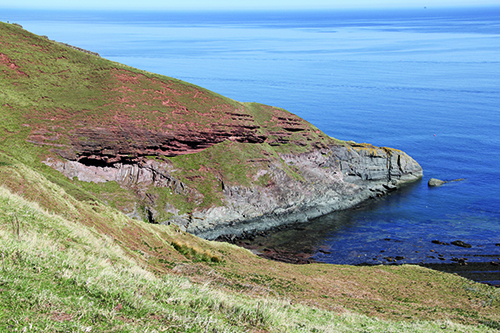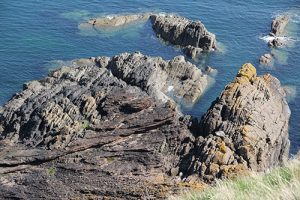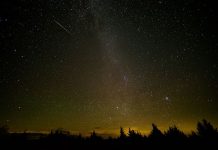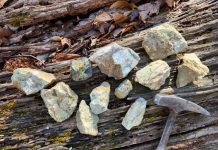
By Jim Brace-Thompson
Sediments build up in layers, giving us a geological record. An unconformity records a gap in that record. For instance, there may be a period when sediments that had been underwater were lifted up then eroded before more sediments were laid down. Such gaps led to an appreciation of deep geologic time when they were noticed by Scotsman James Hutton.
Scotland is the land where modern geology began with Hutton and his tome “Theory of the Earth” (1788). The Bible had been considered the ultimate source of knowledge in the Western world, and a bishop named James Ussher used it to develop a chronology.
Age of Earth
Following dates noted in the Bible, Ussher determined the date of Earth’s creation to be October 23, 4004 BCE. Enter Hutton. A farmer who witnessed first-hand the processes of erosion as he tended his lands, Hutton believed Earth to be far older and that we should use observation of the world around us. Following this line of thought, he observed beds of rock that had been upturned and eroded. Judging by rates of erosion he saw on his own farms, he speculated Earth must be far older than Ussher’s date of 4004 BCE—older by an order of magnitude.

In gathering evidence, Hutton pointed to Siccar Point on Scotland’s eastern edge. Here, he demonstrated processes that shaped the Earth when he observed gray rocks that had been folded and pushed upright, eroded, then overlaid by horizontal beds of sandstone. The amount of time necessary for such a juncture involved, in Hutton’s words, “no vestige of a beginning—no prospect of an end.” John Playfair accompanied Hutton and helped popularize his theory of the age of the Earth. He wrote: “The mind seemed to grow giddy by looking so far into the abyss of time.” Thus, the Siccar Point unconformity played a pivotal role in the history of modern geology.
“The mind seemed to grow giddy by looking so far into the abyss of time.”
I recently took a five-mile hike to observe Siccar Point and saw Silurian beds of greywacke that had been turned vertical by tectonic forces. I saw where such beds had been eroded and broken into conglomerate mingled with red sandstone. Finally, I saw horizontal beds of the “Old Red Sandstone” from the Devonian Period. Truly, I reached out and touched “the abyss of time” in the most famous unconformity of all.
Author: Jim Brace-Thompson
 Founder and overseer of the AFMS Badge Program for kids.
Founder and overseer of the AFMS Badge Program for kids.
He’s also an inductee of the National Rockhound & Lapidary Hall of Fame within the Education Category.















